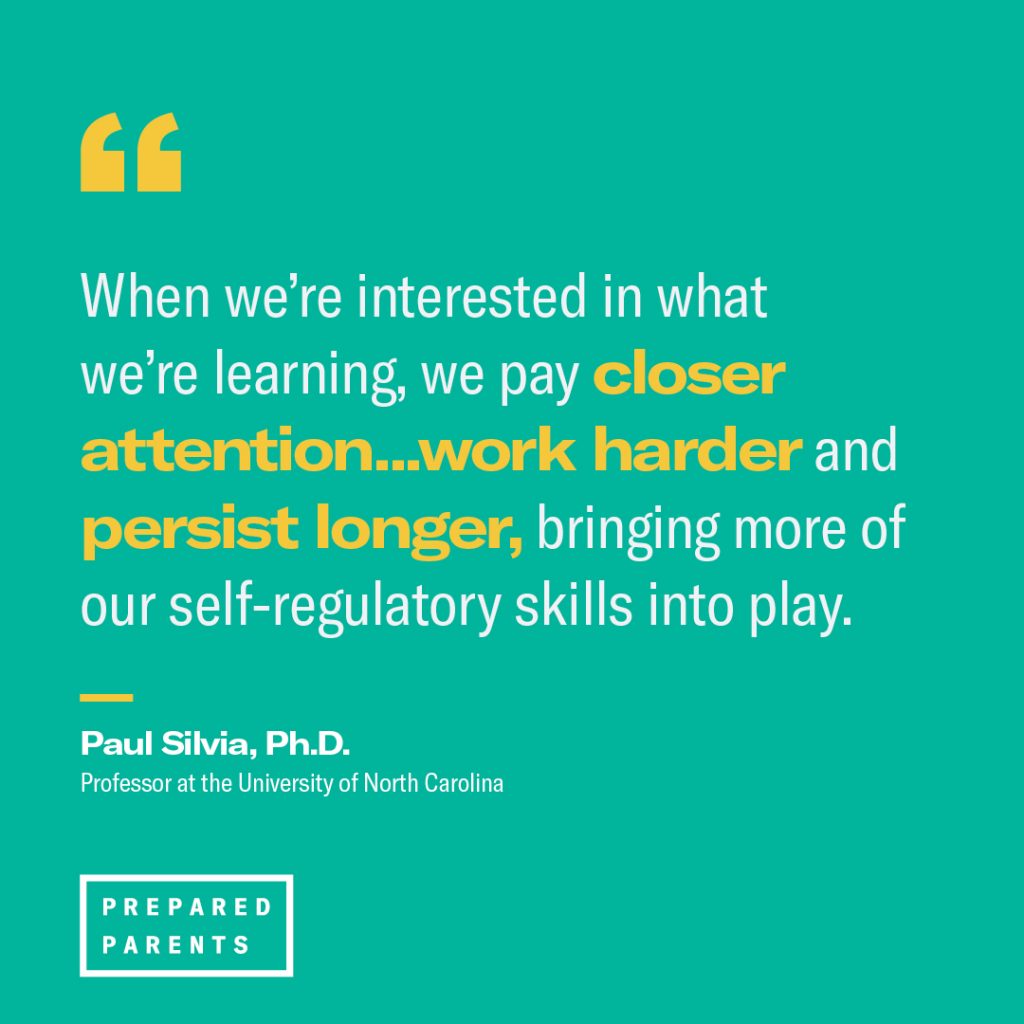You’ve tried taekwondo class. You’ve tried soccer lessons, and maybe even hip hop dancing. But your kid just isn’t interested. Don’t worry—your kid isn’t destined to go through life purposeless.
The kid who isn’t showing interest in anything just hasn’t found that thing to be interested in yet. Now’s the time to encourage their curiosity and try lots of different things to see what sticks. Psychologists view curiosity as a life force, vital to happiness, intellectual growth and wellbeing. It’s often described as a wind kids can harness to take them far toward discovering their identity and purpose:
- Who am I?
- What do I care about?
- What impact do I want to have on the world?

Learning begins with curiosity, and the great news is that our kids are innately curious about a lot of things! Curiosity is the ability to ask questions, challenge our beliefs, be open, explore the unknown, and listen. Curiosity is satisfied when questions are answered. When we enable our kids to ask questions, they get better at learning. It becomes a virtuous cycle. Everything a kid learns makes it easier to learn more because of what they already know. Knowledge builds on knowledge.
Learning scientists consider curiosity to be one of the top three most important habits (along with purpose and self-direction) our kids need to be successful in school and in life. Curiosity is the first step of your kid finding their interests, which can lead to finding purpose. It’s not about what they want to do for college or career, it’s about figuring out who they are, what they care about, and what impact they want to have on the world. It takes time, but through exposure and exploration, you can help your kid narrow down and pursue their deepest interests.
The science of interest looks at what makes things interesting, and how we can cultivate interest in ourselves and others. Researchers are finding that interest can help us think more clearly, understand more deeply, and remember more accurately.
“Interest is a knowledge emotion. It diversifies experience, but also focuses experience by narrowing our choices, leading us to pay attention to this and not to that. When we’re interested in what we’re learning, we pay closer attention and we process the information more efficiently. When we’re interested in a task, we work harder and persist longer, bringing more of our self-regulatory skills into play.”
-Paul Silvia, Ph.D., Professor at University of North Carolina
And finally, a study conducted by Stanford and Yale psychologists including Carol Dweck, best known for her work on Growth Mindset, determined that interests are not predetermined; they can be cultivated over time.
Following your kid’s curiosity is about Exposing them to new opportunities, Exploring the ones that spark interest, and Pursuing the ones that could be deep passions.
- Expose your kid to new experiences. While it may be tempting to load up your kid’s schedule with lots of productive activities, kids need downtime to be curious. Find those one or two things your kid is curious about and explore free or low-cost events in your community to give your kid low-stakes opportunities to try out interests.
- Explore the interests that spark excitement. When an activity really sparks curiosity, help your kid dig deeper beyond the first experience. This is where longer-term commitments come in: designing a project, taking classes, or attending a camp. Make sure to have explicit conversations with your kid to confirm an interest in devoting time and energy to this new exploration.
- Pursue the interests that really click. As your kid explores interests, help them narrow down to the ones they get really excited about. Could this be a summer project, internship, or even college major? Help your kid work through the different paths that could be a good next step.
Here is just one example for what this can look like for our younger kids:
Here is just one example for what this can look like for our younger kids:
Expose—Take a walk outside together. If your kid is intrigued by the bugs on the sidewalk, snatch a few. Then ask, what do you want to know about these bugs? Make a list of the things they’re curious about.
Explore—To learn more about the bugs that sparked their curiosity, grab a book on the subject, do some research online, or watch a video together.
Pursue—If their interest in bugs seems insatiable, encourage them to pursue it. Do they want to create an ant farm? Watch the life cycle of a sow bug? Or observe a chrysalis turning into a butterfly?
But what happens if their interest in bugs wanes? That’s fine. It just means it’s not a subject they’ll want to explore more deeply.
Model curiosity with your own questions.
What are you curious about? When we genuinely seek an answer to a question together, we get to demonstrate to our kid how to collaborate. It also opens up conversation about what we value and how we make sense of the world; but most important, our kid gets to see us as learners ourselves.
Create an environment that encourages curiosity.
Pull out old family pictures and answer your kid’s questions about relatives and ancestors. Are they curious about where the family originated or the customs, language and culture? Send them to the attic or basement to go exploring.
Enable them to get curious with friends and explore a topic of mutual interest.
Here are some helpful online resources curated by Common Sense Media.
If nothing seems to prime curiosity, redirect them.
Ask a question like, “I notice you enjoy building with Legos, did you ever wonder how Legos are made?”


